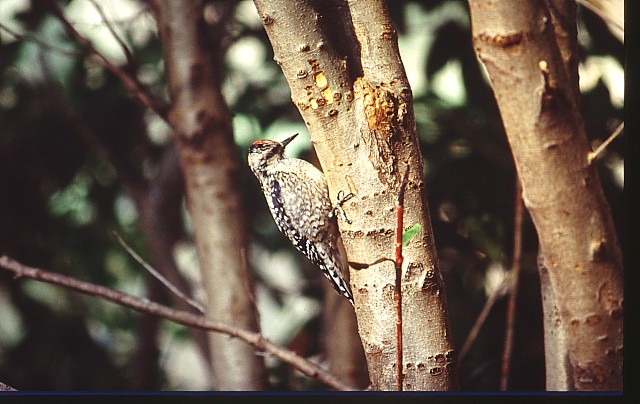
One fall day as I was eating lunch at the kitchen table and looking out the sliding glass doors, two birds came zooming in like missiles towards me. Amazingly, they did not hit the glass as hard as I had expected them to do, and they turned right around and flew off as quickly as they had arrived.
The two birds were the first Yellow-bellied Sapsuckers of the season, visiting birds from the North that would remain in our area until next spring. They are usually noticed on tree trunks and large branches where they make shallow “wells” to obtain sap.
Now is the time to be on the lookout for birds that come south. We have many avian guests that can be easily overlooked because they do not visit seed feeders. To spot them, you should keep an eye on trees and shrubs.
Ruby-crowned and Golden-crowned Kinglets are small birds that can be seen flitting about tree leaves searching for tiny insects, such as aphids. Brown Creepers can be difficult to see as they walk up tree trunks, searching the bark crevices for spiders, insects, or eggs.
Hermit Thrushes can often be found eating the orange berries of European Mountain Ash trees that are widely planted in suburbs and towns. They also eat red holly berries.
If you have overgrown areas or a brush pile on your property, you might also be lucky enough to spot a Winter Wren poking through the debris for insects.
Several years ago I wrote a brochure for the Virginia Department of Forestry on the value of brush piles for wildlife. If you would like a free copy, please send a business-sized self-addressed double-stamped envelope to me at 5554 Sugar Ridge Road, Crozet, VA 22932-2204.
To identify birds, you need a field guide, of which there are many to choose from. Buy the one that you think would be easiest to use, which you can determine by reading the books’ introductions.
If you are brand new to bird watching, you might prefer a book that contains only the most common birds of our area. That way you will not be confused by numerous similar-looking possibilities.
You will also need binoculars. These instruments of course magnify the object of your interest so that you can see it better from far away—and that is usually where you have to be to look at birds.
Naturalist Marlene A. Condon is the author/photographer of The Nature-friendly Garden: Creating a Backyard Haven for Plants, Wildlife, and People (Stackpole Books; www.marlenecondon.com). If you have a question about plants or animals, or gardening in a nature-friendly manner, send it to [email protected] and please watch for an answer in this paper.


